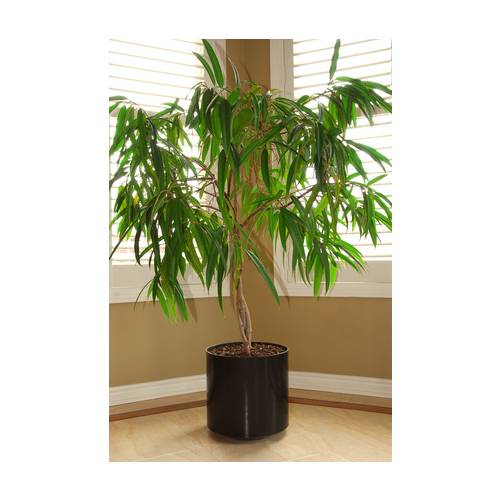
The art of watering
Watering house plants or potted plants ?
- Details
-
Plants that are grown in pots or planters cannot go and look for water themselves if they lack it. It is therefore your responsibility to look after them !
There is no precise rule for watering plants in a pot. Forget the general advice of “watering them twice a week” because it will only lead to mistakes, giving either too much or too little. It is better to individually assess the needs of each plant and act in an appropriate manner. If you are just starting out, do not panic you will soon get the hang of it !
Touching, the best approach
Soak the surface of the soil in a pot and let any excess water run off for a few minutes. Touch the surface of the soil with your hand, without pressing you should feel the presence of the water. If you wait a little longer, a day for example, when it has not been too hot, the soil surface should feel damp, not dry or wet. If you press heavily, you may even be able to detect humidity. If you wait even longer, then you should feel as if you are touching a dry surface. Even if you press very strongly you should not detect any presence of water. The soil is now dry and needs watering.
How much ?
The amount to give depends on how big the pot is and the size of the plant. A small pot will dry out a lot quicker than a large one, which has more mass. In practice, give as much water as needed so that the surface of the soil is not dry to the touch, but at the same time not soaked. Do not leave the saucer under the pot permanently full of water either: plants do not like their roots being immersed in water and they will soon die, with a few rare exceptions.
The easiest method of watering is to put the pot in a bucket of water for about half an hour, then remove it, and leave it to drain.
Use of water reserves
It is true that these may remove the drudgery from watering but they are only
advantageous if they are used with care. Firstly, only use them inside and not outside, after a storm or heavy rain they will flood and turn your pot into an aquarium and your plants will soon rot !
Inside, use them only for solid plants that are willing to have their roots permanently in contact with water, such as papyrus (Cyperus alternifolia). For this type of plant, the use of a water reserve is ideal.
Lime scale on the soil
The use of calcareous (hard) water for watering will eventually lead to the build up of lime scale deposits on the soil surface and on the outside surface of clay pots. Apart from not being aesthetically pleasing this lime scale build up is not healthy for your plants. Remove it from the pots by brushing it off. To remove it from the soil surface use non calcareous water, such as rain water or tap water with the juice of a lemon added for every 5L.
Attention, too cold water !
A final precaution when watering pot plants especially those inside is not to use water that is too cold. Freezing cold water will cause considerable stress to your indoor plants during the winter. Its roots could perish making the plant wilt even when the soil is wet! It is best to let the water reach room temperature before using it. Otherwise, add warm water (about 20°C) to your watering can when you are going to water. - Photos (2)


